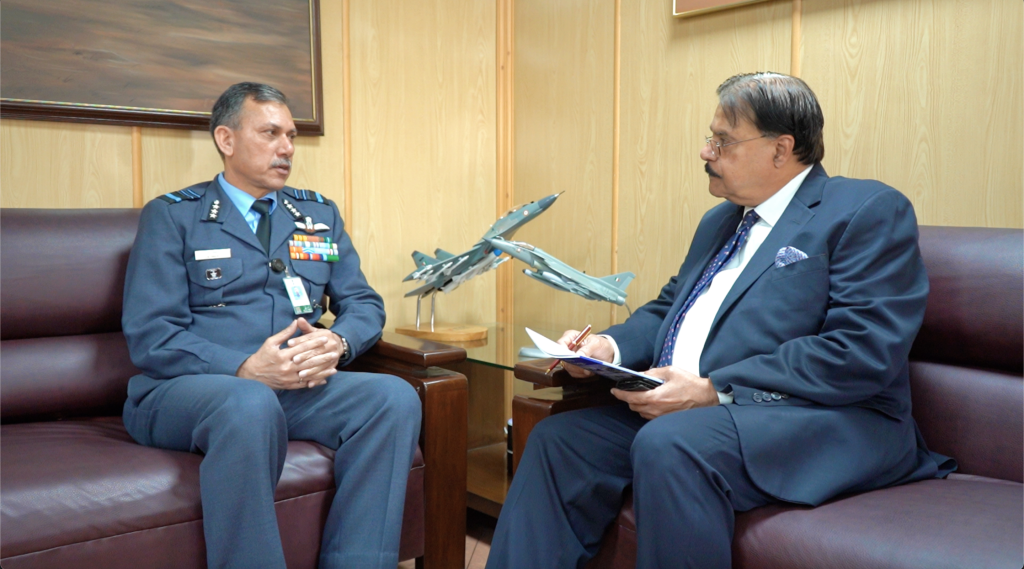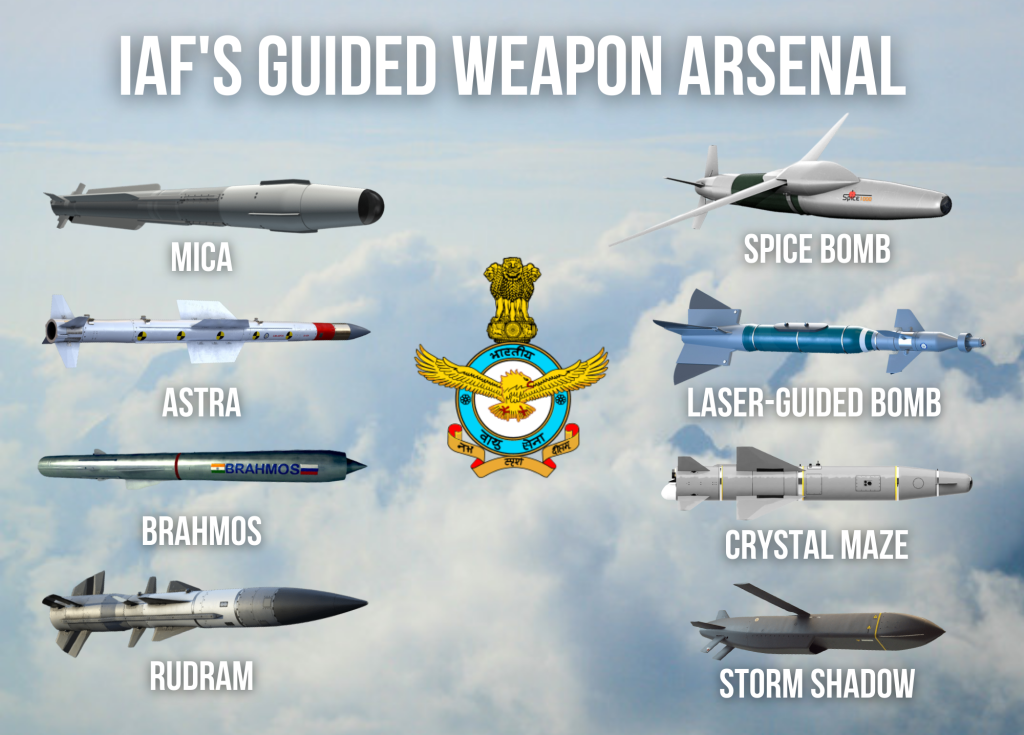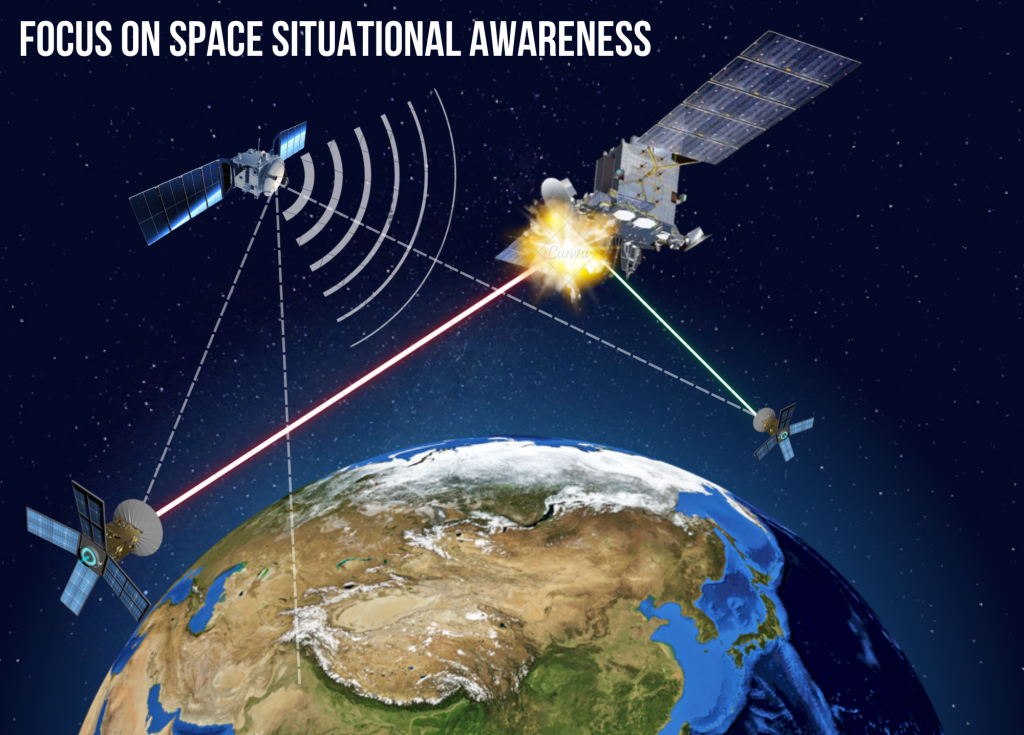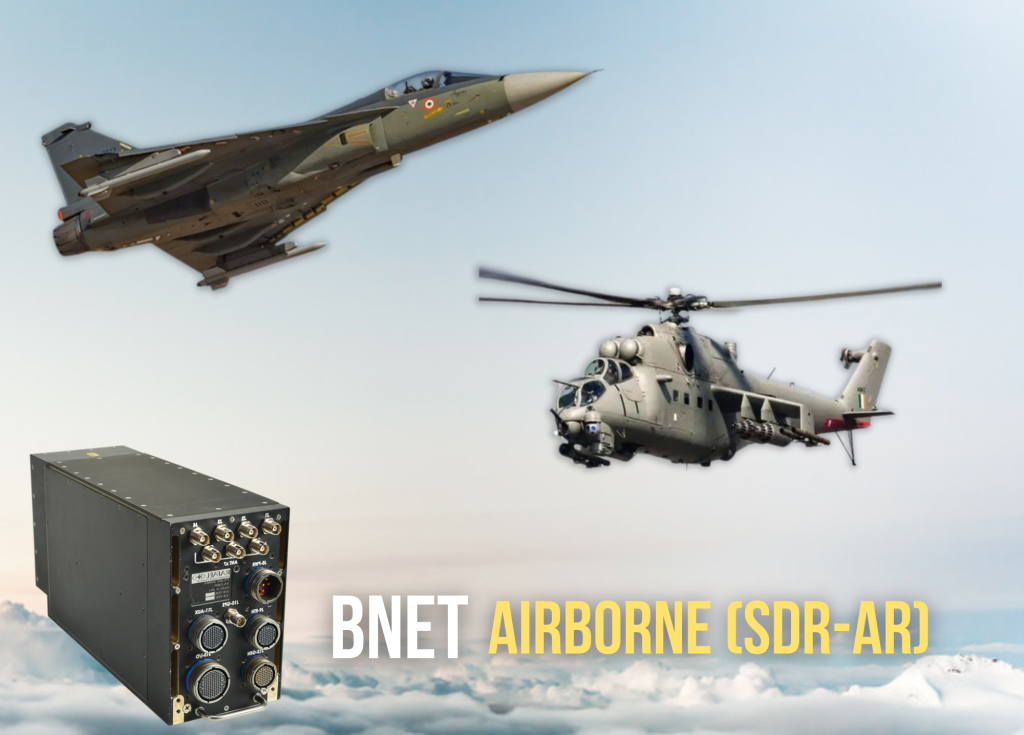By Kamal Shah
In an exclusive interview with Indian Aerospace and Defence, Deputy Chief of the Air Staff, Air Marshal Narmdeshwar Tiwari, spoke to Editorial Director Kamal Shah ahead of Aero India 2023 on a wide range of pertinent issues concerning the Indian Air Force’s short and long term vision and operational requirements and hi-tech integration to remain future ready.

Q. With Aero India 2023 around the corner, what are your expectations from the indigenous industry to meet the Service’s critical technology needs?
Ans: First of all, I would like to say that in the last few years, there have been many policy initiatives as far as ‘Atmanirbharta’ is concerned. Self-reliance in the defence sector is a crucial area for strategic independence, so towards that, we have started a lot of cases…things are happening, for instance, the ‘Make’ process, the Technology Development Fund (TDF), Innovations For Defence Excellence (iDEX). Parallelly we are hand-holding the industry in many important contracts that we have already signed. Some have leapfrogged to the actual productionisation and delivery. So, if you ask me, the defence ecosystem has changed dramatically over the past three-four years, and the industry understands the critical technologies required because we are in constant dialogue with them.
Today, you can ask the Micro, Small, and Medium Enterprises (MSMEs) and even the big industries that accessibility to the Services to understand the requirement is not an issue. So, when we deal with the industry whether it is big or small, we make them understand what the future direction in which defensive and offensive technologies are progressing. They are well versed with our requirements, and once they have understood it they are now in that process of developing essential products which will meet our requirements. Take one or two small cases in which I can tell you where there have been rapid developments, especially in the Unmanned Aerial Systems (UAS) and Counter Unmanned Aerial Systems (C-UAS). In both these cases, we have a tremendous vendor base which today has developed to such an extent that we are over-saturated. But it is an excellent place to be because that gives us variety, and fosters competition, with one [vendor] trying to outdo the other. That helps because we get better technologies as we progress.
Q. What are the technologies you would suggest to the Indian companies dealing in aviation sectors to focus on keeping IAF’s requirements in mind?
Ans: Some of the big things we can focus on later. These are early days in our plan for indigenisation; it is important to start with the smaller ones and then work towards bigger ones because we need a basic critical mass before we come to that level where you can develop aero-engines, seeker technologies, and highly critical and advanced technologies like space-based thermal and radar systems payloads. So, looking at this currently, UAS, C-UAS, networking; this is a very critical area, and we have the core technologies; it is just a question of integrating them into a product which is usable by the Services in communication equipment and radios, especially the software-defined radios. Then we are looking at long-range precision weapons because this is a critical aspect of the offensive element. Long-range precision with advanced mid-course guidance, and terminal homing is another critical technology that we are looking at.

We are also looking very closely at space-based technologies because we know that space is the next area of importance to use, primarily from a reconnaissance and communications point of view as well as for the networking of various systems. As you are aware, the IAF has a well integrated network, and in our network systems, besides terrestrial elements, a lot of it depends on space. So, this is a critical area when we want redundancy and reach in far-flung regions where it is difficult to maintain terrestrial networks. These are the important areas we are looking at in this regard.

We are also parallelly working on many new technologies, especially in terms of cyber-security and use of Artificial Intelligence (AI). We have a very advanced AI data centre which the IAF has, in the past one to two years, developed and today we are using it very effectively. Many of the systems that we have developed have a database that can be used for AI. We have the database for electronic maintenance, as well as the database for the integrated air command and control system and even the airborne networks. These databases can be utilised using AI for decision support.
All of this gives us a good foundation on which we can output AI and develop new technologies that can support us in future warfare.

Q. As indigenisation in defence takes momentum, how do you see the vision towards achieving self-reliance in defence taking shape?
Ans: We are seeing that while critical technologies will take some time to develop, there is no harm in starting with the easier aspects. Developing to the extent that we have the critical mass to focus on advanced technologies. Aero-engines are a critical area where we need important capability in the country. Imaging and payloads are other areas, especially for UAVs, space-based, or even airborne sensors.
Future warfare is all about information. A critical component required is having the payloads for surveillance that can provide that information. This is one area that we need to work on. Networking, cyber-security and AI are interlinked because mostly they are related to the networking of components, encryptions technology so that we secure communications, and of course, utilising both terrestrial and space-based assets to ensure that this networking has liquid redundancy. Future warfare is all about having information and sharing it so that we can reduce the sensor to shooter time to the least possible.
Q. With the drone threat emerging as a 21st-century military challenge, how is IAF supporting Indian companies in developing drone & counter-drone solutions? How is the success, and what are the challenges IAF facing in it?
Ans: The IAF realised very early on that this is a very critical area which we need to focus on. I am happy to say that over three years ago, we began associating with small, niche companies that have done a tremendous amount of work in this field and today we are reaping the fruits of that association. What we used to get from abroad at exorbitant prices is now being made in the country in far more economical terms. The most significant advantage is that the technology is mainly Indian. These technologies come from across the board – from small to large firms. There are many companies delivering products to us which till three years back was only a concept. We have had tremendous progress in both drone and counter-drone technology and actual products are available today. Most of our assets across the country are being protected by such systems.
Q. What message would you like to give to the indigenous defence industry, especially startups and innovators participating in Aero India 2023?
Ans: As a service headquarters, we are the clients and end users of the products. Today we are open for business in terms of accessibility for any company. We have a Directorate of Aerospace Design at Air Headquarters, and their numbers are available; For any product which you feel is of use to the IAF, you are free to contact us, and we will be more than willing and help you workout the requirements and assist you in evaluation of your product. Atmanirbharta and self-reliance is a train that has been set in motion and will not stop, and our Services are more than willing to partner with the industry so that we genuinely gain strategic independence.
Q. Looking at the current massive expansion plans in terms of the number of aircraft, both in commercial and military domains in India, do you see India becoming an MRO sector hub in the region and could proliferate in India?
Ans: I think this is one area where we can leverage our civil aviation market to a large extent, both for civil and military requirements. This leveraging has to be a whole of nation approach. Finally, anyone will set up an MRO facility in the country if it makes business sense. One part is policymaking, which involves imports, taxes and other aspects. But the other part is the talent pool and infrastructure availability. Fortunately, there is an abundance in that area, we are very well off, and there has been a policy push to rationalise the taxes.
So, there is no reason why India should not be a natural hub for MRO because our own domestic aviation industry is so large. These same companies that are present in the civil aviation market are also involved in the military side, whether it is Boeing, Airbus, GE and other such companies. So, we should leverage this domestic market and utilise it to focus on our military platforms also. They should set up MRO facilities here because it makes business sense more than anything else. It will also help us sustain higher levels of serviceability. Also these facilities can be used by our friends in South Asia and South East Asia. We can become the hub for such an industry, and I am sure there is a promising future.
Q. What is your message to those attending Aero India 2023 and the industry?
Ans: There are good times ahead. It is important to develop critical technologies, therefore investing in research and development (R&D) is essential. Finally, we focus on rolling out products that would be useful to the Services. If you focus on delivery of good products and its sustenance, there is a lot of future in this country.





